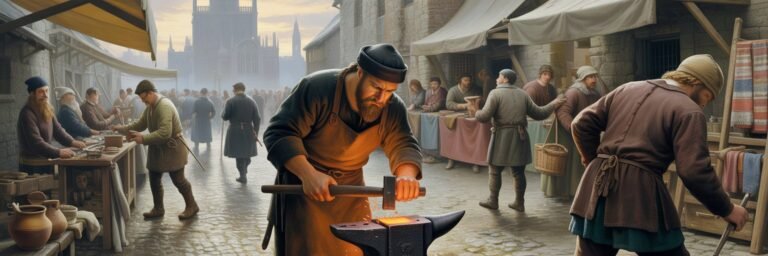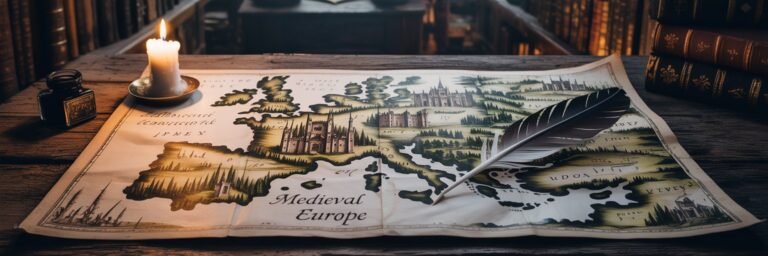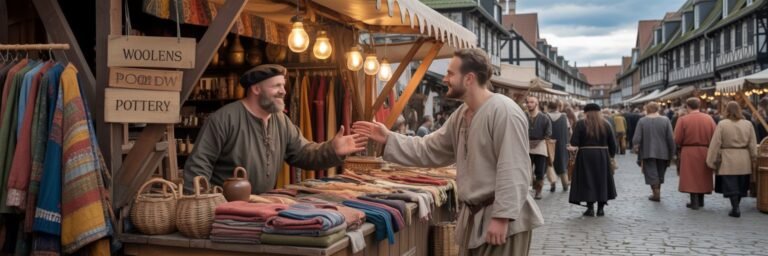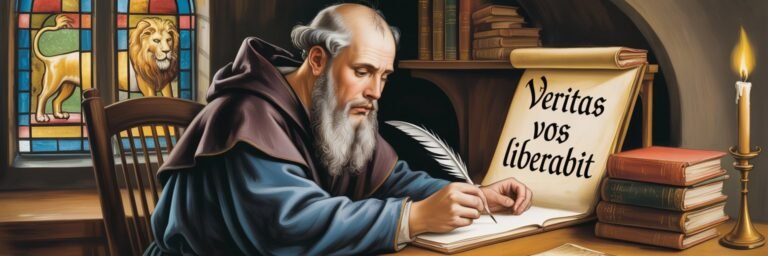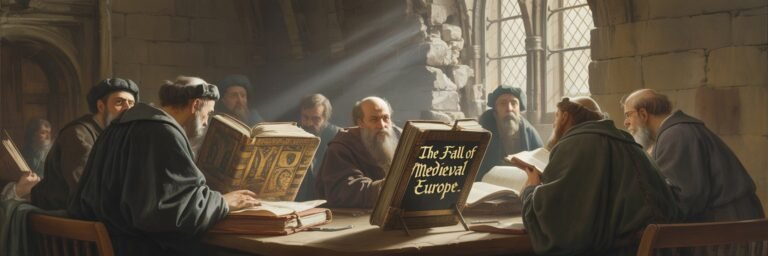INTRODUCTION
As the curtain of antiquity fell, several hundred years of European barbarity ensued, what we now dub as the Medieval era or the Middle Ages. This period, from approximately the 5th to the 15th centuries, saw the emergence of nations as we understand them today. From profound cultural shifts to scientific advancements that continue to influence modern society, the Middle Ages extricated Europe from the shadows of Roman grandeur and the cataclysmic fall of the Western Roman Empire, laying the foundation for the continent’s golden Renaissance epoch.
HISTORICAL BACKGROUND
For centuries, the history of the Middle Ages was mired in misconceptions and dismissed as a period of ignorance, disease, and cultural regression, a long interval between classical antiquity’s splendor and the Enlightenment’s intellectual reawakening. However, upon deeper exploration, the Middle Ages reveal a vibrant tapestry of European history woven with intricate threads of political intrigue, technological innovation, religious conflict, and economic reform.
Over ten centuries, Europe metamorphosed from a kaleidoscope of scattered tribes and small feudal fiefdoms into a collection of burgeoning kingdoms and powerful empires. Notable figures such as Charlemagne, the Frankish king who united a large part of Europe under a central authority in the 8th century, or William the Conqueror who radically reshaped England following the Norman Conquest in the 11th century, stood like colossi casting long shadows over the historical landscape.
THEORIES AND INTERPRETATIONS
Scholars interpret the Middle Ages through various lenses, some focusing on the period’s socio-political scale, others emphasizing faith and the Church’s influence, or unravelling the tangles of economic and technological evolution. This diversity serves to underscore Europe’s multi-dimensional transformation during these eons.
One mainstream interpretation draws attention to political and military events such as the Norman Conquest and the Crusades which had profound impacts on European landscape, leading to vibrant cultural exchanges and reshaping socio-political boundaries. On the other hand, alternative theories may stress demographic shifts and fiscal revolutions, as David Herlihy did, arguing these were the principle drivers of change during the Middle Ages. Meanwhile, revisionist historians emphasize the complexity and refinement of medieval civilization, rejecting its portrayal as a grim interlude of civilization’s progress.
MYSTERIES AND CONTROVERSIES
The hallowed halls of this epoch are suffused with persistent historical enigmas and controversies. The medieval era’s narrative is punctuated by unresolved questions, contested accounts, and disputed theories.
Indubitably, one of the most intriguing controversies revolves around the period explicitly called “The Dark Ages.” Some maintain that the term accurately reflects cultural regression after the Roman Empire’s fall when learning and arts purportedly shrunk away. Critics argue that this is an oversimplification, a clichéd trope that dismisses the era’s complex tapestry of advancements in technology, governance, and society.
And then, there are the Crusades, a topic that continues to stoke the embers of controversy across secular and religious lines about their implication and intent. Were they altruistic Christian missions to defend the Holy Land, or were they driven by the Church’s ambition and territorial expansion?
SYMBOLISM AND CULTURAL SIGNIFICANCE
Medieval Europe, with its profound religiosity, potent symbolism, and diversified cultures, wrote indelible historical scripts that shaped future centuries. The ways in which religion, specifically Christianity, dictated societal norms, values, and systems of governance, demonstrate its dominant role in cultural, political, and intellectual life. The Church was, indubitably, a social anchor during these tumultuous times.
Additionally, institutions such as the Knightly Orders of the Middle Ages, embody enduring symbols of chivalry, valor, and faith, having transcended into popular culture. Architecture too, most visibly in the form of towering cathedrals, manifest both religious fervor and the era’s aesthetic sensibilities.
MODERN INVESTIGATIONS
As historians continue to scrutinize this epoch with fresh insights, it becomes ever more clear that the Middle Ages weren’t marooned in stagnation, but dynamic and transformative. By examining artifacts, written works, and archaeological sites, contemporary scholarship dispels old legends, replaces antiquated theories, and offers polished lenses through which to understand this critical period. Interdisciplinary collaborations between historians, anthropologists, archaeologists, and scientists analyze everything from medieval court records to DNA evidence and satellite imagery, deepening our understanding of life in this era.
LEGACY AND CONCLUSION
The legacy of Medieval Europe is inextricably woven into the fabric of modern Western society, evident in our governance, economic systems, religion, culture, and social structures. The birth of Parliament in England during this period laid the bedrock for democratic institutions worldwide. The Magna Carta, signed in 1215, is celebrated as a cornerstone of individual rights and liberties.
Cultural contributions such as the Arthurian legends, the Divine Comedy by Dante Alighieri, and the enchanting architecture of Notre-Dame Cathedral continue to inspire and captivate audiences across the globe. And, perhaps most notably, the scientific revival sparked in the Middle Ages lit the path towards our current technological and scientific advancements.
From the myths, controversies, and historical intricacies, to political reforms, cultural evolution, and the dawn of modern thought, Medieval Europe’s influence is an enduring testament to the period’s vitality. Its winding narrative that arcs across centuries, stretching its tendrils into the present, continues to shape our understanding of the world and our place within it. Though often misinterpreted and underestimated, the Middle Ages were not a footnote between two periods of enlightenment but a pulsating era of metamorphosis that profoundly sculpted the course of Western civilization.
Understanding the ebb and flow of the Middle Ages and its formidable repercussion helps us not only appreciate this transformative period in European history but also maps the voyage our societies undertook to reach where we are today. Indeed, in the echo of its long past, we hear the sounding heartbeat of our present.

